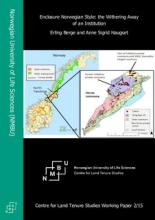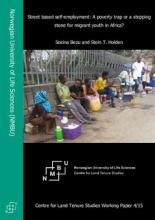Land Library
Welcome to the Land Portal Library. Explore our vast collection of open-access resources (over 74,000) including reports, journal articles, research papers, peer-reviewed publications, legal documents, videos and much more.
/ library resources
Showing items 82 through 90 of 300.The paper examines the pace of land acquisitions in terms of creating legislative and policy options to safeguard local communities that are directly affected, including compensation for land that is taken, and protecting community interests in the socio-economic and environmental continuum of in
High levels of poverty and a predominantly rural population raise questions of vulnerability to manipulation during large scale land acquisitions in Kenya.
The project aims to create actionable policy proposals to make spaces of participation more effective in five countries in Latin America, and to contribute to the needs of existing social movements within their local contexts.
Over 94 % of Nepalese migrant workers are male youth who leave their female counterparts behind to manage agriculture alongside their traditional domestic chores.
The accountability mechanisms currently underpinning land transactions in Ghana are very weak.
This report presents a case study from Senegal that explores the relationships between economic development and climate change. Urbanisation and economic diversification are transforming the climatic risks that Senegal faces and widening the rural-urban resilience gap.
In terms of the splintering of cities, it is important to understand contemporary urbanization processes, speculative real estate development, and ways to challenge these via new modes of politics.
More than 200 years after the King sold one of the “King’s commons” of Follafoss (located inthe current Verran municipality) to urban timber merchants, local people in some ways still behave as if the area is a kind of commons.
A significant percentage of youth in urban Africa is employed in the informal sector. The
informal sector is more accessible than the formal sector for people with low human and
financial capital, such as youth migrants from rural areas. But the sector is also generally









